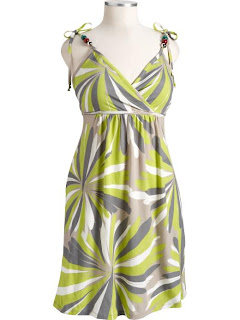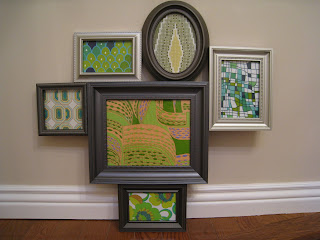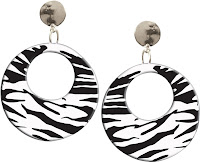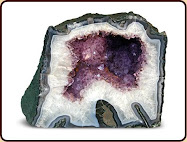Grace Kelly in an Edith Head creation - Rear Window
Have the days of wearing pretty dresses long since past? These days it seems as though women have resorted to wearing pants more often than ever before. Is it only for comfort or convenience? something tells me that in a male-dominated world (sorry guys) being feminine has gone the way of the dodo...Or has it? Well ladies I'm happy to say (and guys you'll like this one) dresses are not just for Grace Kelly. There is nothing to say that you can't wear a dress to the office or on the weekends. Dresses don't have to be reserved only for nights out or for special occasions. I wear dresses all the time to work, appropriately paired with a cropped cardigan or blazer because I still want to be taken seriously in my job, but I wear them unashamed and unabashed even when my colleagues choose show up to work wearing pants.
A dress is a fantastic way of feeling feminine, it can evoke a sense of confidence and there is nothing wrong with being a little flirty - but not trashy. I understand that you may not have the luxury of showing up to work in a dress because you work in a sea of suits and have a dress code or uniform that you have to adhere to, but ladies when the weekend comes why not throw on a fun sundress and go out shopping. Nothing is to say that a dress has to be reserved for certain occasions. There are many different materials, shapes, styles, patterns, colours and lengths of dresses out there and if you're not prone to knowing what style of dress suits you best I am going to help uncover the world of dresses and how to drape them over your body-shape.
Dresses for the Straight Body Shape
Many women fit into this category of body shape, where there is very little differentiation from the measurements of the bust, waist and hips. This body shape ranges from the tall & thin to petite. The women who share the tall & thin straight body shape tend to have a smaller bust and less curves, while the women who share the petite straight body shape have similar lines as those of the tall-thin woman but can have larger bust sizes in some cases.
In order to create emphasis on the bust and waist areas for the tall-thin straight body shape, you want to highlight these areas by adding belts, sashes and embellishment to enhance and create the illusion of a larger bust or to define a waist. The hemline of the dress can be either long or short thanks to the longer legs on the tall-thin straight body type woman.
For the petite straight body type, you don't want to overpower your dress with too many stark embellishments because this can detract, keep them simple such as an empire waist or a skinny belt. In order to create the appearance of longer legs keep the hemlines shorter, petite straight body shapes can get away with the a-line silhouette, but stay away from a-line dresses that have a rigid material as they can make you look like a doll. Tunic and Shift style dresses look good on the petite straight body shape and are classic.
Dresses for the Pear Body Shape
Pear body shapes (also known as bell shapes) feature a small/average bust with wider waist and hip measurements. Meaning that the top starts smaller and gets wider towards the bottom, similar to how a pear looks. Women who have this body shape want to draw attention to the upper-half of their body by having open necklines which focuses the eye to the face. When the detailing is kept at the bodice combined with a loose fitting bottom this style is very flattering on pear shapes. Try to stay away from straight or tight bottoms as these styles will accentuate the waist/hips, unless you're comfortable with showing off what you've got, then I say more power to you!
Dresses for the Apple Body Shape
Apple body shapes tend to have more weight focused at the waist and in order to create less focus on this the eye needs to be drawn to the neckline. Dresses that have empire waistlines or babydoll silhouettes work best on this body type. Dresses that have pattern and emphasis on design also work well on this body type.
Dresses for the Hourglass Body Shape
The hourglass is a very favourable body shape as it features a defined waist, medium to large bust and curves. This body shape is also very versatile as you can wear just about any style of dress out there, although, there are some styles of dress that suit the hourglass body shape better than others. The key is to accentuate the features of the hourglass, the bust, waist and hips. A form fitting dress is always a good bet in helping to define the hourglass. If you're tall, you can wear a mid-length or shorter hemline or go even as far as a maxi-length dress to maximize your height. If you're an average height you can make the most of mid-length or shorter in fun silhouettes such as a bubble hem. Just be sure that whatever you do that you maximize those curves, because after all, the hourglass is the most coveted of all body shapes out there.
Dresses for the Full-Figured or Curvaceous Body Shapes
Many women are full figured with lots of curves and there are many dresses out there that help to emphasize those curves while softening the body to create a very beautiful look. The key is to enhance the curves without looking garish. Look for dresses with thin straps, low necklines such as a v-neck, halter neck or scoop neck and those that have empire waists. If you have some spots that you would like to cover up, there are many dresses out there that can do the trick either by using details such as lace or in the patterns/fabrics used. Dresses that have movement to them help to detract the eye from those undesirable spots that you may want to hide, but if you're more daring (and I say you should be!) nothing is to stop you from selecting a form-fitting dress that can accentuate those curves!
Now those are only a few of the body shapes out there and of course not every woman fits into one of these categories as there are many combinations of body shapes. The best thing to do is to figure out what is your main body shape and work with that. Try on some dresses in the styles that I mentioned and see what works for you. Some women (like myself) have broad shoulders and I found that frills around the neckline/shoulder don't look as good as they do on women who's shoulders are not as pronounced. It's trial and error, but when you do find that dress that fits your body the way that it should, believe me there is nothing more empowering.
So get out there and start wearing those dresses around town, and trust me, you'll be thanking me for it!
Happy Shopping!
Courtesy of:






















































